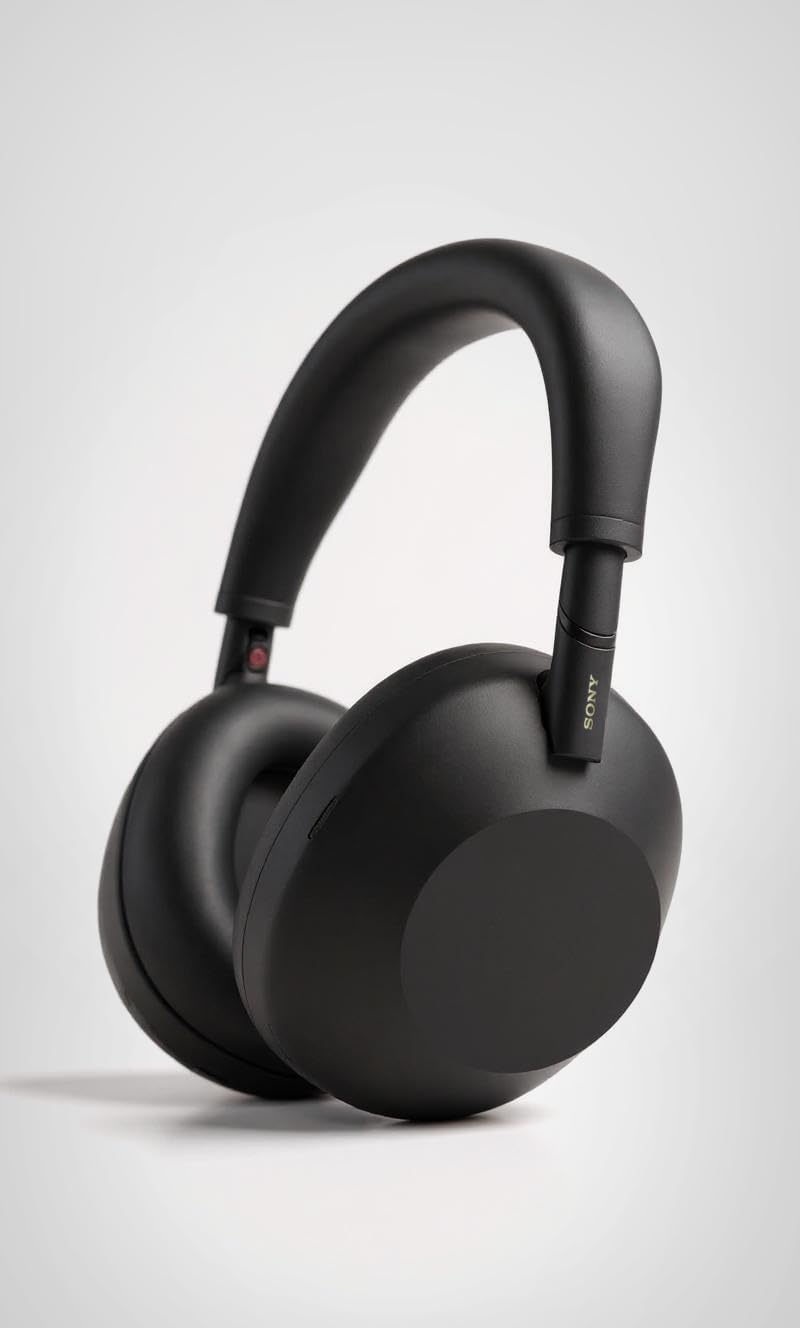Sony’s WH 1000XM6 wireless headphones launched in May 2025. These headphones come as the successor to the highly popular WH 1000XM5, aiming to refine rather than drastically change a winning formula. If you’ve used earlier models, especially the XM5, you’ll quickly recognize the familiar design and controls but also notice a handful of improvements that add to the overall experience.
Active noise canceling (ANC) remains the big selling point for these headphones. Sony equipped the WH 1000XM6 with their new QN3 HD processor, a chip specifically designed to handle noise cancellation and audio quality better than its predecessor. It uses 12 integrated microphones strategically positioned to pick up ambient noise and effectively neutralize it. The result is notably stronger noise canceling performance, especially against challenging environments like crowded cafes, offices, or flights. Users report a genuine step up from previous models, making the XM6 a clear choice if quiet listening matters most.
Audio quality also sees a moderate but meaningful upgrade. Sony fine-tuned their 30 mm driver units to deliver clearer sound. There’s an improvement in bass response, giving listeners deeper, tighter lows without muddying mid-tones or vocals. The audio clarity is excellent, particularly for podcasts and vocal-heavy music genres. You might need some EQ tweaks in the Sony companion app to dial down treble sharpness, depending on personal preference. But overall, these headphones offer a balanced and immersive audio experience that matches their premium pricing.
Comfort and build quality have also received attention. Sony has reintroduced foldable hinges, something users missed in the previous model. This feature significantly improves portability, making the XM6 easier to pack away for travel. The headphones remain lightweight, ensuring comfort for long listening sessions. The earcups are cushioned with soft materials, though interior spacing could feel snug if you have larger ears. Some early user feedback noted a firm clamping force right out of the box, but this generally eases with regular use. Still, it might take a couple of days to break them in fully.
Battery life remains excellent, aligning with previous Sony models at around 30 hours of playback with ANC enabled. Fast charging is a convenient addition, providing several hours of playback from just a short charge time. This quick charge capability is a valuable feature for travelers or those who frequently forget to plug in overnight. The accompanying charging case has been upgraded, now featuring a magnetic clasp and a useful internal storage pocket for cables, adding practicality without extra bulk.
In terms of connectivity, the WH 1000XM6 uses Bluetooth 5.3, which provides reliable and stable connections to devices. Multipoint pairing lets you switch between two devices smoothly, which is ideal for multitasking between a phone and laptop. Sony also included a beta low-latency LE/LC 3 mode, aimed at gamers or those watching videos to minimize audio delays. Unfortunately, the headphones don’t have a USB connection for wired high-resolution audio, something audiophiles might miss. While not a deal-breaker for casual listeners, it’s an odd omission at this price range.
The headphones pair seamlessly with Sony’s dedicated app, which offers numerous customizations. Users can adjust EQ settings, configure touch gestures, and fine-tune ANC settings to match their environment. The software is easy to navigate and significantly enhances the user experience by allowing personalized sound profiles. The call quality on these headphones is generally good, though not outstanding in noisy outdoor conditions, especially with wind noise. Similarly, the ambient mode, designed to let external sounds through clearly, works adequately but isn’t quite as polished or natural-sounding as some rival headphones.
Sony has increased the XM6 price by around $50 compared to the XM5, which may give some shoppers pause. While the improvements—particularly in ANC performance, portability, and battery enhancements—are noticeable, they’re incremental rather than groundbreaking. For users who already own the WH 1000XM5, upgrading might feel unnecessary unless you’re frequently in noisy environments or heavily value portability and faster charging.
Build durability also seems improved, addressing previous customer feedback. The plastics and materials used feel robust, and the metal hinges give the impression they will last longer through daily wear and tear. However, the headphones are not rated for water or sweat resistance, a limitation to consider if you’re thinking about using them during workouts or in damp climates. Sony could have addressed this common complaint from earlier models but chose not to, possibly to maintain a lighter weight and better comfort.
Sony’s WH 1000XM6 headphones strike a good balance between innovation and consistency. The product continues the brand’s tradition of excellent noise cancellation, superior audio quality, and comfortable design, making it one of the top choices in the high-end headphone market. The incremental improvements are subtle but meaningful, especially for frequent travelers and professionals looking for quiet concentration and premium audio experiences.
Ultimately, the Sony WH 1000XM6 headphones justify their premium pricing if you value best-in-class noise cancellation, impressive sound quality, and enhanced portability. While the headphones aren’t without flaws, their overall performance and reliability keep them at the top tier of wireless noise-canceling headphones in 2025.

Best-in-class noise cancellation, impressive sound quality, and enhanced portability.
